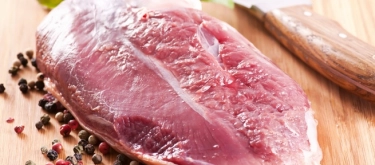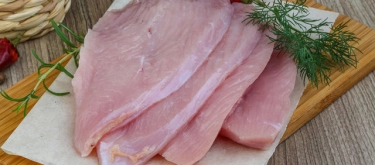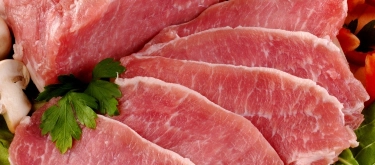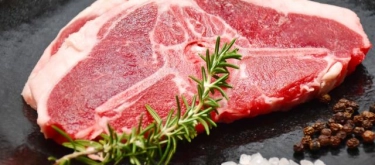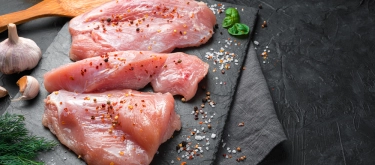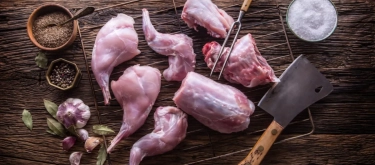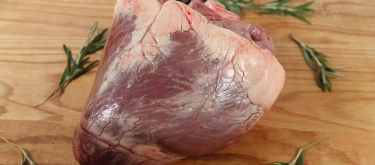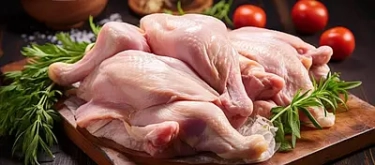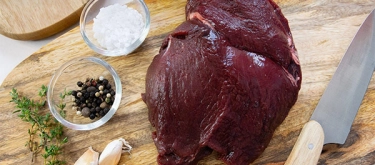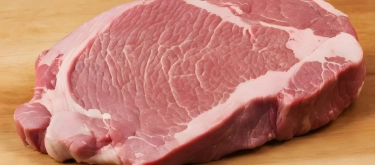Duck: Taste Profile, Aroma, Benefits and Health Risks
Duck is a flavorful and versatile poultry meat renowned globally for its rich taste, succulent texture, and distinctively juicy qualities. A favorite ingredient in various cuisines—especially Asian, French, and Eastern European—duck is frequently served roasted, grilled, or braised. Its popularity stems from culinary delicacies like Chinese Peking duck, French duck confit, and various gourmet dishes that highlight its deep, satisfying flavor profile.
Duck is poultry meat derived from birds, making it unsuitable for vegetarian or vegan diets. It naturally contains no gluten but is relatively high in fat, especially saturated fats, necessitating moderation for those monitoring cholesterol or fat intake. Proper cooking is essential to eliminate health risks.
What does Duck taste like?
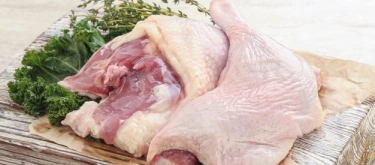
Complete Sensory Description
Taste:
Duck meat offers a uniquely rich, savory, and mildly sweet flavor profile with subtle gamey undertones. The prominent taste is deeper, richer, and more complex than chicken or turkey, marked by a delightful combination of umami, mild sweetness, and distinctively fatty richness.
Aroma:
Raw duck presents a mild, slightly gamey aroma, evolving into rich, deeply savory scents upon cooking. When roasted or grilled, it develops inviting fragrances—crispy skin aromas, gentle caramelization, and subtle herbal nuances.
Texture:
Duck is famously tender, juicy, and succulent due to its higher fat content compared to other poultry. Proper cooking achieves a tender, melting texture complemented by crispy, flavorful skin.
Appearance:
Raw duck meat is darker reddish-pink, often richly marbled with fat. Cooked duck features attractive golden-brown skin, crispy exteriors, and tender, juicy interior textures ranging from pale to medium-brown.
Varieties and Culinary Uses
-
Whole Duck:
Ideal for roasting (e.g., Peking duck, roasted duck with orange sauce), allowing crispy skin and tender meat. -
Duck Breast (Magret):
Popularly pan-seared, grilled, or roasted, featuring tender texture, rich flavor, and crispy skin. -
Duck Legs and Thighs:
Perfect for braising, confit, and slow cooking; develops tender, flavorful results. -
Duck Confit:
Preserved duck legs slow-cooked in fat, a classic French delicacy prized for tenderness and rich flavor.
In-depth Flavor Analysis
-
Richness & Umami:
Duck's notable fat content amplifies rich, savory, umami flavors, enhancing depth and gastronomic satisfaction. -
Subtle Sweetness:
A gentle sweetness emerges during roasting or grilling, complementing savory richness and providing sophisticated culinary balance. -
Fatty Influence:
Duck fat contributes significantly to juiciness, flavor depth, and distinctive mouthfeel, creating succulent textures and intense savoriness. -
Flavor Evolution:
Cooking methods greatly influence duck’s taste, transforming mild raw flavors into profoundly savory, crispy, caramelized delights, particularly evident in roasting or grilling.
Culinary Applications
-
Roasting:
Classic preparation—Peking duck, roast duck with citrus or berry sauces, delivering crispy, flavorful skin and tender meat. -
Pan-searing and Grilling:
Duck breasts quickly cooked medium-rare to medium for optimal tenderness and flavor, often served with sweet, tangy, or aromatic sauces. -
Slow Cooking & Confit:
Ideal for duck legs and thighs—slow-cooking creates tender, flavorful dishes like cassoulet or confit. -
Asian Cuisine:
Integral to dishes like Chinese roast duck, Thai red curry duck, Vietnamese duck pho, or duck pancakes, featuring vibrant flavors.
Selection and Storage
Selecting Quality Duck:
- Choose duck meat with firm, moist flesh, pale-to-deep reddish color, evenly distributed fat, and no unpleasant odors.
- Prefer duck with clean, intact, creamy-white fat and fresh aroma, avoiding excessive dryness or discoloration.
Storage Recommendations:
- Refrigerate fresh duck meat below 4°C (39°F), consuming within 2–3 days.
- For longer storage, freeze duck meat in airtight packaging; consume within 6–12 months for optimal freshness.
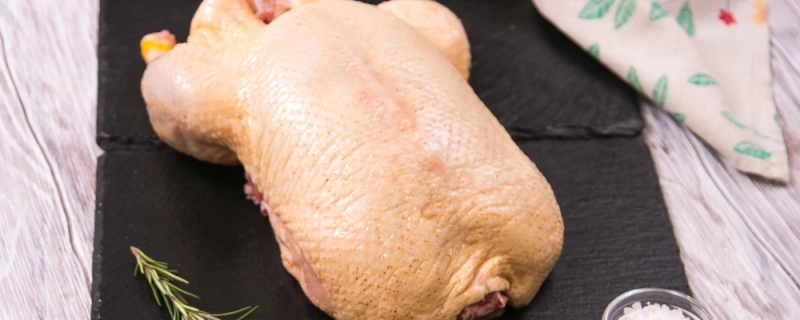
Nutritional Insights
-
High-Quality Protein:
Provides essential protein beneficial for muscle growth, maintenance, and overall nutritional health. -
Rich in Vitamins & Minerals:
Offers substantial amounts of iron, zinc, selenium, vitamin B6, B12, riboflavin (B2), phosphorus, and potassium, supporting metabolism, immunity, and neurological health. -
High Fat Content:
Contains significant fat, including monounsaturated fats beneficial in moderation, though higher in calories compared to leaner poultry options. -
Iron and Selenium:
Notably higher in iron than other poultry, beneficial for preventing anemia and enhancing immune function.
Expert Insights & Culinary Tips
-
Optimal Cooking Techniques:
Culinary experts recommend roasting, grilling, or slow cooking duck, employing low-and-slow heat or precise roasting methods to render fat, crisp the skin, and ensure tenderness. -
Flavor Pairings:
Duck pairs excellently with strong, sweet, tangy, or acidic flavors such as citrus (orange, mandarin), berries, soy sauce, garlic, ginger, honey, star anise, or five-spice, enhancing complexity and balance. -
Resting for Tenderness:
Allow duck to rest (10–15 minutes) post-cooking, redistributing juices, ensuring moist tenderness, and intensifying flavor.
Interesting and Curious Facts
- Duck is an ancient culinary delicacy, historically prized in cuisines from Imperial China and French gastronomy to modern gourmet cooking worldwide.
- Duck fat rendered during cooking is prized in culinary traditions for roasting potatoes or enhancing flavor in gourmet dishes.
- Peking duck, roasted crispy and thinly sliced, is among the world’s most celebrated and historically significant poultry dishes, popularized during China’s Ming Dynasty.
How to Enjoy Duck
- Prepare crispy roasted duck served with orange sauce, plum sauce, or berry reduction for gourmet meals.
- Enjoy traditional Chinese Peking duck with pancakes, cucumber, scallions, and hoisin sauce for authentic experiences.
- Grill duck breast with herbs, spices, citrus marinades, or Asian-inspired seasonings for flavorful, tender dishes.
- Incorporate duck legs into slow-cooked dishes or French confit preparations, enjoying rich flavor and tenderness.
Harm and Dietary Considerations
-
High Fat & Calories:
Higher fat and calorie content necessitates mindful consumption for individuals managing heart health, cholesterol, or weight control. -
Proper Cooking Essential:
Duck must be cooked thoroughly (internal temperature at least 74°C or 165°F) to prevent risk from bacterial contamination or parasites. -
Potential for Allergies:
Though rare, some individuals may experience allergic reactions to duck meat proteins.
Final Thoughts & Sensory Journey
Duck provides an exceptionally rich, flavorful, and indulgent culinary experience, celebrated worldwide for its juicy texture and deep umami flavor. From crispy-skinned roasted dishes to luxurious confit preparations, duck offers gourmet versatility, culinary complexity, and an enticing journey into both traditional and contemporary gastronomic delights.
Resources
- McGee, H. (2004). On Food and Cooking: The Science and Lore of the Kitchen. Scribner.
- USDA FoodData Central (2023). Duck Meat: Nutritional Profile and Safe Cooking Guidelines.
- Food and Agriculture Organization (FAO). (2021). Global Poultry Production: Nutritional Insights and Culinary Traditions.
